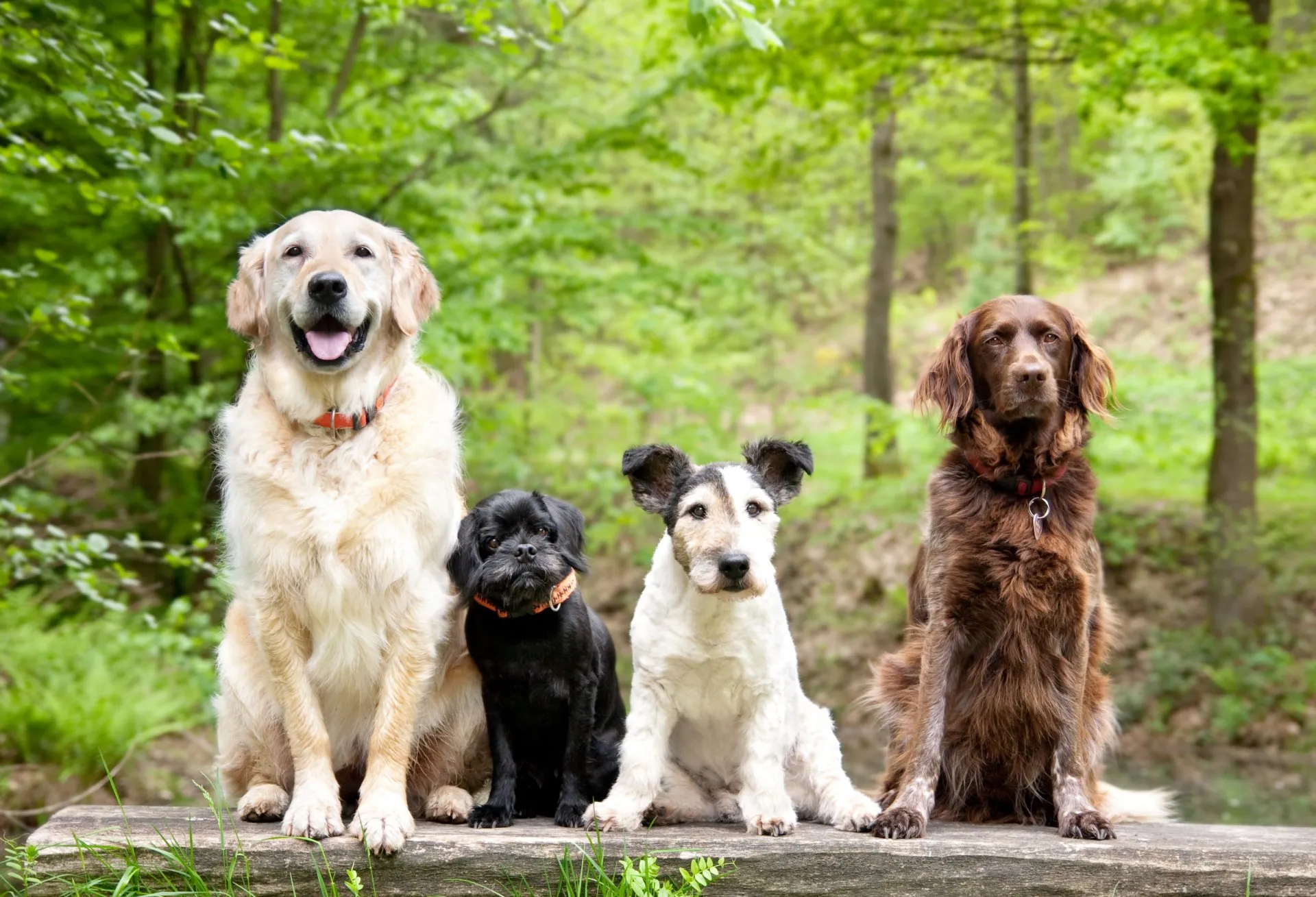Did you know that your canine companion can get the flu? In fact, there’s an outbreak going on now. Fido’s version, canine influenza virus (CIV)–also often called the dog flu—is an influenza A virus. There are several strains, but the two that are most common in the US are H3N8 and H3N2. These strains are both extremely contagious, and are the culprits behind the current outbreak. A local vet offers some information on this below.
Symptoms
If Fido gets the flu, he’ll likely have many of the same symptoms as you would, such as coughing, nasal discharge, fever, lethargy, and reduced appetite. Of these, coughing is the most common. It may also be the most persistent. That said, our furry friends all react differently to the flu. Some pups will not show any symptoms at all. Other dogs may bounce back after a few days, or stay sick for weeks. A few will become severely ill. In rare cases, dog flu can be fatal. Senior dogs and pooches with chronic illnesses and/or immune deficiencies are at highest risk.
Spread
Fido’s flu can spread extremely quickly. The virus is transmitted through droplets of saliva, and can remain active in respiratory droplets on surfaces for several hours. Pups can easily contract it through shared toys or dishes. Fido could also get sick by greeting or nose-booping another pooch, or even just by sniffing a stick at a park that a sick dog played with hours ago.
Dogs that have contracted the flu remain contagious for about a month. As one can imagine, places like dog parks, daycares, grooming salons, and kennels can quickly become hotspots of contagion. Another potential source of spread? People! Someone who pets an infected dog and then a healthy one may quickly spread the illness from pooch to pooch. Be aware of the risks when taking Fido to different places. You can also track the current outbreak online here.
Treatment
Unfortunately, there is no cure for the canine flu. In most cases, dogs recover on their own, though they may need some extra TLC. You’ll need to keep your furry pal comfy and hydrated, and monitor him carefully. If you know or suspect that your pup has the flu, reach out to your vet and ask for specific care tips. Keep in mind that illness can be stressful for dogs, so you might also want to review our guide on Managing Canine Anxiety to help keep your pet calm during recovery.
Our Advice on Canine Flu in 2024
Are there any specific disinfectants or cleaning protocols that are effective against the canine influenza virus in the environment?
To combat the canine influenza virus in the environment, specific disinfectants and cleaning protocols are recommended. Disinfectants labeled as effective against influenza A viruses, such as those containing quaternary ammonium compounds or bleach solutions, should be used. Surfaces where dogs frequent, including kennels, bowls, and toys, should be regularly cleaned and disinfected. It’s essential to allow the disinfectant to remain on the surface for the contact time specified by the manufacturer to ensure effectiveness. Frequent hand washing and the use of disposable gloves can further prevent the spread of the virus.
Can the canine influenza virus survive on human clothing or skin, and if so, for how long?
Yes, the canine influenza virus can survive on human clothing and skin, though its survival time is relatively short. On skin, the virus typically remains viable for up to 12 hours, whereas on clothing, it can survive for about 24 hours under suitable conditions. To minimize the risk of transmission, it is advisable to wash hands frequently with soap and water after handling infected dogs and to launder clothes that may have come into contact with the virus. Using hand sanitizers and changing clothes after exposure can also help reduce the risk of spreading the virus.
What is the mortality rate for dogs infected with canine influenza?
The mortality rate for dogs infected with canine influenza is relatively low, typically around 1% to 5%. Most dogs with the virus experience mild symptoms and recover with supportive care. However, severe cases can occur, particularly in dogs that are very young, very old or have underlying health conditions, which can lead to complications like pneumonia. In these instances, the mortality rate can increase, making early detection and supportive veterinary care crucial to managing and recovering from the infection.
Can dogs spread the canine influenza virus to other species, such as cats or humans?
Dogs infected with the canine influenza virus primarily spread it to other dogs. The virus is highly species-specific, meaning it does not typically infect humans. However, there have been documented cases where cats have contracted the H3N2 strain of the canine influenza virus from dogs. Transmission between dogs and cats can occur in environments where they are in close contact, such as homes or shelters. Despite this, there is no evidence to suggest that either strain of canine influenza poses a risk to human health.
How can dog owners distinguish between the symptoms of canine influenza and other common respiratory illnesses?
Distinguishing between canine influenza and other respiratory illnesses in dogs primarily involves observing specific symptoms and their progression. Canine influenza symptoms often start suddenly and can include a persistent cough, nasal discharge, fever, lethargy, and reduced appetite. While these symptoms can overlap with other respiratory conditions like kennel cough, canine influenza is more likely to cause high fevers (over 104°F) and a more pronounced lethargy or malaise. Veterinary testing is the definitive method to distinguish canine influenza from other respiratory infections, as symptoms alone can be similar.
Do you have questions about your pet’s health or care? We’re here to help! Our Vet Wellness & Pet Vaccinations services can help keep your furry friend protected against various illnesses, including canine influenza. Contact us, your local animal clinic in West Greenwich, RI!




!Social Media Icons